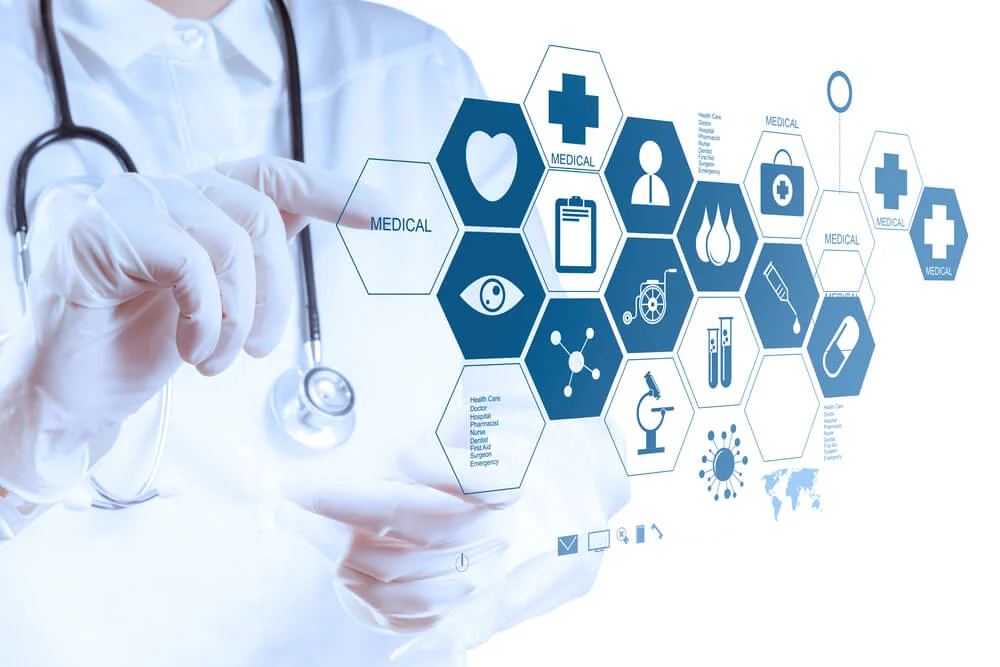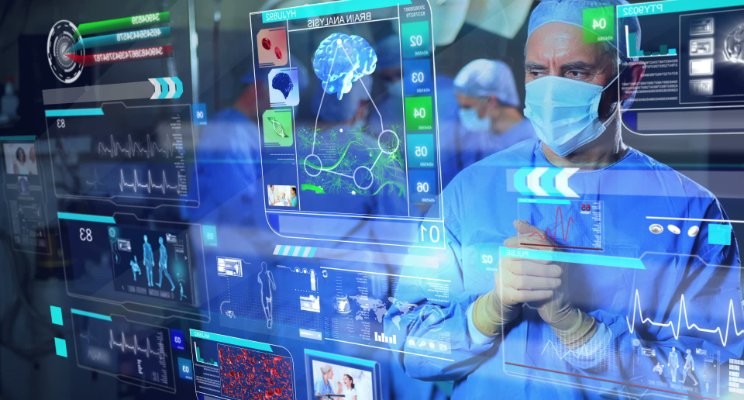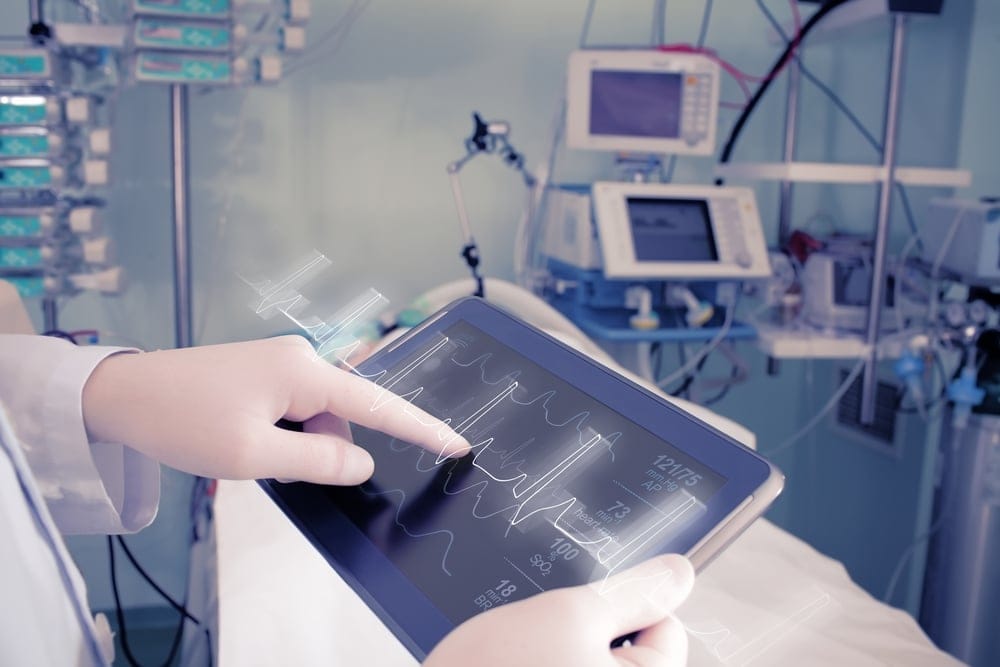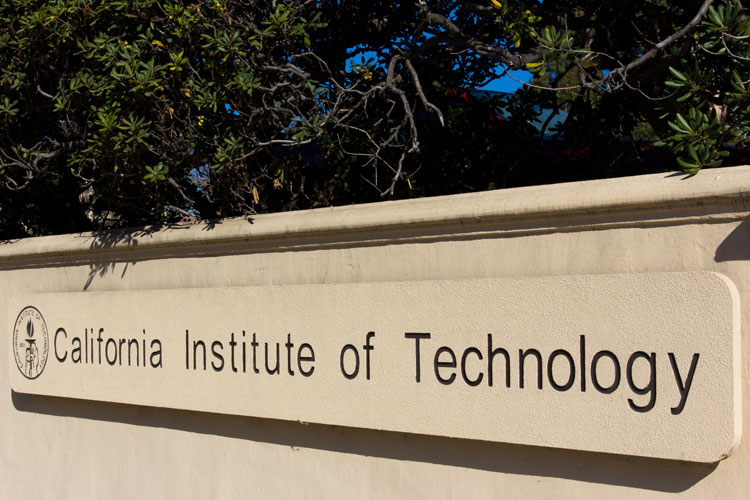The advancements in medical technology have revolutionized the healthcare industry, providing numerous benefits to patients and healthcare professionals alike. From early detection of diseases to improved treatment options, medical technology has greatly improved the quality of care delivered to patients.
Toc
One of the most significant impacts of medical technology is its role in early detection and diagnosis of diseases. Through advanced imaging techniques such as MRI, CT scans, and ultrasounds, doctors are able to identify potential health issues at an earlier stage than before. This means that diseases can be caught and treated at a much more manageable stage, leading to better outcomes for patients.
Medical technology has also played a crucial role in improving treatment options for various illnesses. For example, robotic
Introduction to Medical Technology

Medical technology refers to the use of tools, procedures, and systems to improve healthcare delivery. It encompasses a wide range of products and services, from diagnostic equipment to surgical instruments, and even electronic health records.
The evolution of medical technology has been ongoing for centuries, with significant advancements being made in recent years. These advancements have not only improved patient outcomes but also streamlined processes and reduced costs.
In this document, we will explore the various ways in which medical technology is revolutionizing healthcare and discuss its impact on patients and healthcare professionals.
What is Medical Technology?
Medical technology, also known as healthcare technology, is the application of scientific knowledge and techniques to improve health and wellbeing. It encompasses a broad range of products, services, and processes used in the prevention, diagnosis, treatment, and management of diseases.
Some examples of medical technology include:
- Diagnostic tools such as MRI machines, CT scanners, and x-ray machines
- Therapeutic equipment like pacemakers and artificial organs
- Surgical instruments such as lasers and robots
- Electronic health records (EHRs)
These are just a few examples among many others that have been developed to improve patient care.
Why Medical Technology is so Important today
The importance of medical technology in today’s world cannot be overstated. It has transformed the way healthcare is delivered, providing numerous benefits to both patients and healthcare professionals.
One of the primary reasons for its importance is its role in early detection and diagnosis of diseases. As mentioned earlier, advanced imaging techniques have made it possible to detect health issues at an early stage, leading to better outcomes for patients.
Moreover, medical technology has greatly improved treatment options for various illnesses. Minimally invasive procedures using robotic equipment have reduced recovery time and post-operative complications for patients.
Medical technology has also enhanced communication and collaboration among healthcare providers through electronic health records. This allows for a more comprehensive view of a patient’s medical history, leading to better-informed decision-making.
Data and Statistics
- A report by Grand View Research forecasts the global medical technology market to reach $605.7 billion by 2025, with a compound annual growth rate (CAGR) of 5.2%.
- Statista data indicates that in 2020, the telemedicine market size worldwide was valued at over $45 billion, highlighting the growing importance of remote healthcare services.
- According to a study by the American Hospital Association, over 95% of hospitals in the U.S. are using electronic health records (EHRs), demonstrating the widespread adoption of digital technology in healthcare settings.
- The World Health Organization (WHO) reports that the use of digital health technologies, including telemedicine, mobile health, and health information systems, can improve the efficiency and accessibility of healthcare, particularly in low-resource settings.
Roles of Medical Technology on Healthcare Industry

The impact of medical technology on the healthcare industry has been profound, transforming the way healthcare is delivered and improving patient outcomes. Some of the key roles that medical technology plays in the healthcare industry include:
Early Detection and Diagnosis
Early detection and diagnosis remain one of the cornerstones of medical technology’s impact on healthcare. Advanced imaging techniques and diagnostic tools enable healthcare providers to identify diseases at their most treatable stages. For instance, technologies such as digital pathology and genomic testing provide deep insights into an individual’s health, allowing for tailored treatment plans that can significantly increase the likelihood of successful outcomes. Additionally, wearable technology, such as heart rate monitors and glucose sensors, empowers patients to track their health in real-time, facilitating proactive management of chronic conditions. These innovations not only improve survival rates but also enhance the overall quality of life for patients by fostering a more responsive approach to healthcare.
Enhancing Treatment Options
In addition to early detection, medical technology has significantly enhanced treatment options available to patients. Innovations such as minimally invasive surgical techniques have transformed traditional procedures, resulting in shorter recovery times and reduced hospital stays. For example, robotic-assisted surgeries allow for precision and control that surpasses human capabilities, minimizing damage to surrounding tissues and enhancing overall surgical outcomes.
Furthermore, the incorporation of biotechnological advancements, such as targeted therapies and personalized medicine, allows treatment plans to be tailored specifically to the genetic profile of individual patients. This shift towards a more customized approach not only increases the effectiveness of treatments but also reduces the incidence of adverse effects. As we continue to integrate technological advancements into treatment protocols, we see an evolution in patient care that prioritizes both efficacy and safety, illustrating the crucial role medical technology plays in modern healthcare.
Latest Innovations of Medical Technology

The field of medical technology is constantly evolving, with new breakthroughs and innovations emerging regularly. Here are some of the latest advancements making waves in the industry:
Surgical Robotics
Surgical robotics represents one of the most exciting advancements in medical technology today, allowing for greater precision, flexibility, and control in surgical procedures. These robotic systems enable surgeons to perform complex operations with heightened accuracy through minimally invasive techniques. For instance, robotic-assisted surgery can enhance manoeuvrability and provide high-definition 3D visualization of the surgical site, significantly improving the surgeon’s ability to navigate intricate anatomical structures.
The da Vinci Surgical System is a prominent example, used for various procedures including prostatectomies and hysterectomies. Its precision and reduced recovery times have made it an invaluable tool in modern surgery. Moreover, ongoing research and development are pushing the boundaries of what robotic systems can achieve, including the potential for remote surgeries where specialists can operate from different geographic locations. As these technologies continue to advance, the possibilities for improving patient care and outcomes are limitless, affirming surgical robotics as a cornerstone of future healthcare.
Telemedicine
Telemedicine has revolutionized healthcare delivery by enabling remote consultations between patients and healthcare providers. With the rise of digital communication platforms, patients can now seek medical advice from the comfort of their homes, which is especially beneficial for those in rural or underserved areas. This innovation not only increases accessibility but also reduces the strain on healthcare facilities, allowing for better allocation of resources.
The growth of telemedicine has been accelerated by advancements in mobile health apps and wearable devices that monitor vital signs and health metrics in real-time. Patients can share this data with their healthcare providers during virtual appointments, making it easier to manage chronic conditions and provide timely interventions. Additionally, telemedicine fosters greater patient engagement and empowerment, as individuals take a more active role in their healthcare management. As technology continues to evolve, telemedicine is set to play an increasingly pivotal role in shaping the future of healthcare delivery, ensuring that quality care is accessible to all.
Artificial Intelligence in Healthcare
The integration of artificial intelligence (AI) into healthcare is transforming clinical decision-making and patient care. AI algorithms can analyze vast amounts of medical data, from diagnostic imaging to electronic health records, to identify patterns that might be missed by human practitioners. This capability enhances early diagnosis and treatment plans, ultimately leading to improved patient outcomes.
AI is also streamlining administrative tasks within healthcare facilities, such as appointment scheduling and billing, resulting in greater operational efficiency. Furthermore, predictive analytics powered by AI can foresee patient needs, allowing for proactive interventions that enhance patient engagement and satisfaction. As AI technology continues to advance, its potential to drive innovations in personalized medicine, improve healthcare accessibility, and enhance clinical efficiencies will only grow, solidifying its role as a crucial component in modern healthcare systems.
Future Trends

The future of medical technology is promising, with several emerging trends set to reshape the industry:
AI and Machine Learning
The integration of AI and machine learning into medical technology is poised to revolutionise the way healthcare is delivered and experienced. These technologies enable systems to learn and adapt from vast datasets, allowing for more sophisticated analyses and predictions regarding patient outcomes. In practice, this means that AI can help identify which treatments are most effective based on individual patient data, leading to more personalised healthcare solutions.
Additionally, machine learning algorithms are being applied in predictive analytics, allowing healthcare providers to anticipate patient needs and streamline care processes. For example, hospitals can use these tools to predict patient admission rates, ensuring that resources are appropriately allocated and enhancing operational efficiency. As AI continues to evolve, we can expect even more innovative applications, such as early detection of diseases through pattern recognition in imaging studies and the development of virtual health assistants which provide guidance and support to patients on an individual level.
Ultimately, the trend toward integrating AI and machine learning in healthcare will not only improve diagnostic accuracy and treatment precision but also enhance patient engagement and ensure that healthcare systems become more responsive and efficient in their operations. These advancements herald a new era of medical technology that prioritises a data-driven approach to patient care, further solidifying the role of technology in improving health outcomes.
Wearable Health Technology
Wearable health technology is becoming an integral part of personal health management, offering users real-time insights into their physiological metrics. Devices such as smartwatches and fitness trackers monitor vital signs including heart rate, sleep patterns, and physical activity levels, empowering individuals to take charge of their health. This continuous data collection allows for more informed decision-making regarding lifestyle changes and preventive measures.
In addition to personal tracking, wearable devices can facilitate remote patient monitoring, allowing healthcare providers to gather valuable data outside of traditional clinical settings. This capability is particularly beneficial for chronic disease management, as it enables timely interventions based on real-time health information. As wearable technology continues to advance, we anticipate improvements in accuracy and functionality, expanding their role in both personal health and clinical care, while fostering a culture of proactive health management among users. The integration of these devices into healthcare systems will further enhance the efficacy of patient care, ensuring that monitoring and treatment are increasingly tailored to individual needs.
Real life examples of successul medical technology recently developed

CRISPR-Cas9 Gene Editing Technology
CRISPR-Cas9 is a revolutionary gene editing technology that has the potential to cure genetic diseases and revolutionise medical treatments. This technology allows scientists to make precise edits to DNA, eliminating or correcting mutations that cause diseases such as cystic fibrosis or sickle cell disease. The first successful human trials using this technology were conducted in 2017, where researchers used CRISPR-Cas9 to remove cancer-causing genes from immune cells in patients with leukemia.
This breakthrough has opened up endless possibilities for treating genetic disorders and developing new therapies for conditions that were previously considered incurable. With further advancements and refinements, CRISPR-Cas9 has the potential to change how we approach and treat diseases, improving patient outcomes and quality of life.
3D Printing in Healthcare
The use of 3D printing in healthcare is transforming the way medical devices are designed and manufactured. This technology allows for the creation of custom-made prosthetics, implants, and surgical instruments that are tailored to individual patients’ needs. This personalization not only improves treatment outcomes but also reduces the risk of complications and speeds up recovery times.
Additionally, 3D printing has been used to produce human tissues such as skin and cartilage, with researchers actively exploring its potential in organ transplantation. With this technology, it may be possible to create organs on demand, reducing the need for donor organs and addressing shortages in transplant waiting lists.
Conclusion

The landscape of healthcare is rapidly evolving, spurred by technological advancements that enhance patient care and improve outcomes. Innovations such as AI, machine learning, wearable health technology, CRISPR-Cas9, and 3D printing are not just improving existing practices but are also reimagining what is possible in medical treatment and diagnostics. As these technologies continue to develop, they hold the promise of making healthcare more accessible, efficient, and personalized. The integration of these advancements signals a shift toward a more proactive approach to health management, empowering patients and providers alike to work together in achieving optimal health. As we look to the future, ongoing research, collaboration, and investment in these technologies will be critical in harnessing their full potential and addressing the challenges faced by healthcare systems around the world.







